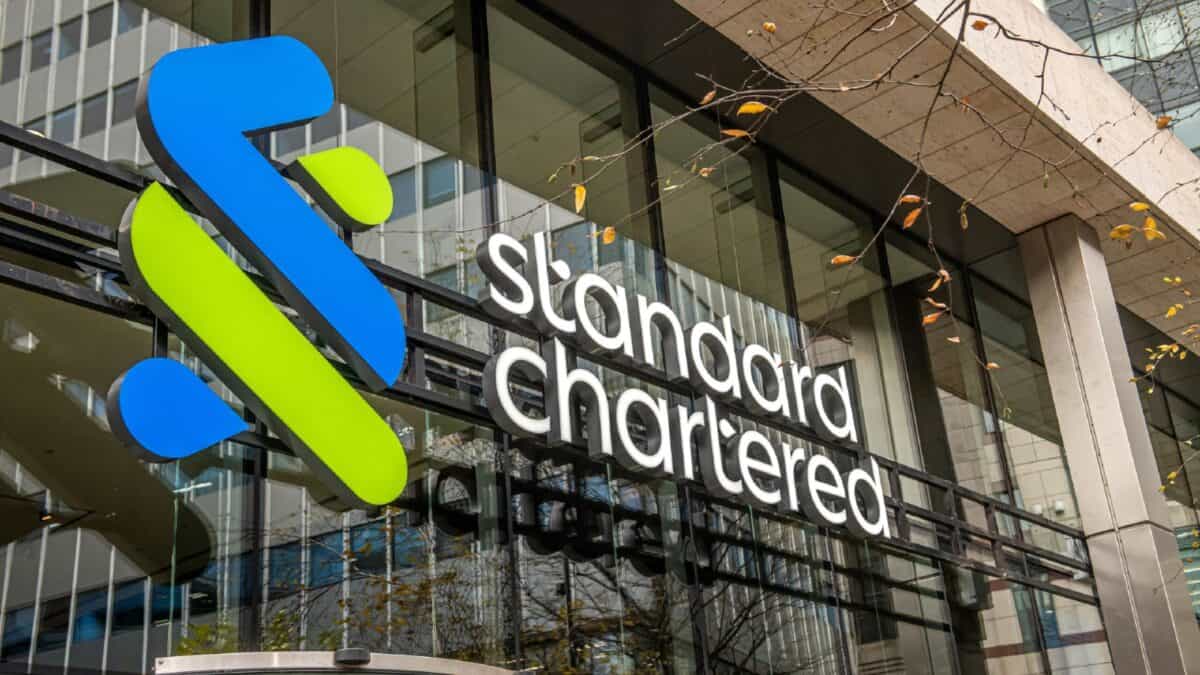Banks are well represented on the FTSE 100. We have Barclays, HSBC, Lloyds, NatWest and Standard Chartered. These remain some of the biggest financial institutions in the world, but British banking industry market-cap is a fraction of the size it was prior to the financial crash.
Today, UK-listed banks tend to change hands with much cheaper valuation metrics than their US-listed peers. This isn’t unusual as the latter stocks tend to trade at a premium. But there are few places this premium is as large as the financial sector.
Undervalued on earnings
One of the most common valuation barometers is the price-to-earnings (P/E) metric. This is a financial ratio that compares a company’s current stock price to its earnings per share (EPS).
Investors and analysts use the P/E ratio as a tool to assess the relative value of a company’s stock. Higher ratios suggest a company is more expensive, and lower valuations suggest a company is cheaper.
Here’s how FTSE 100 banks compare with their US counterparts. As we can see, all five UK-listed banks trade at a substantial discount to these three chosen US-listed banks. This infers that UK banks are better value.
| P/E Forward | |
| Barclays | 6.1 |
| HSBC | 5.7 |
| Lloyds | 5.8 |
| NatWest | 4.6 |
| Standard Chartered | 6 |
| Bank of America | 8.2 |
| Goldman Sachs | 13.9 |
| JP Morgan | 8.8 |
Undervalued versus book value
Another useful metric is the price-to-book (P/B) valuation. This ratio compares a company’s current market price per share to its book value per share.
The P/B ratio is particularly valuable for investors who focus on the company’s balance sheet and asset base. A P/B ratio below one may suggest the stock is trading at a discount to its book value, indicating a potential undervaluation.
Here’s how FTSE 100 banks compare with their US counterparts on the P/B ratio. Once again, there’s a clear trend suggesting US banks are more expensive than their UK peers.
| P/B | |
| Barclays | 0.37 |
| HSBC | 0.86 |
| Lloyds | 0.55 |
| NatWest | 0.49 |
| Standard Chartered | 0.51 |
| Bank of America | 0.85 |
| Goldman Sachs | 1.06 |
| JP Morgan | 1.46 |
What about prospects?
Of course, stocks are also valued on their expected performance in the coming years, not just the year ahead or their asset values.
After all, a higher P/E often means investors expect more growth from the stock in question.
In the UK, analysts have registered their concerns about the impact of a severe economic downturn on credit defaults. This is undoubtedly weighing on the share prices of UK-focused banks like Barclays and Lloyds, even as these concerns become less worrisome.
While there are plenty of considerations, a useful metric which takes into account a company’s prospects and growth is the PEG ratio. This factors in both the P/E ratio and the expected earnings growth rate of a company.
The PEG ratio helps investors assess whether a stock is fairly valued, overvalued, or undervalued, based on its earnings growth expectations.
A PEG ratio below one may indicate that the stock is undervalued, considering its growth potential.
| PEG Forward | |
| Barclays | 1.22 |
| HSBC | 0.57 |
| Lloyds | 0.48 |
| NatWest | 0.44 |
| Standard Chartered | 0.83 |
| Bank of America | 1.44 |
| Goldman Sachs | 1.72 |
| JP Morgan | 1.76 |
Once again, the data suggests US companies are more expensive than their British peers. This is the type of data that informs my investment decisions.








